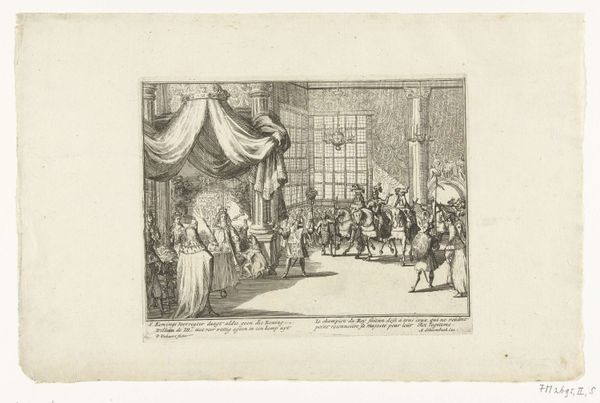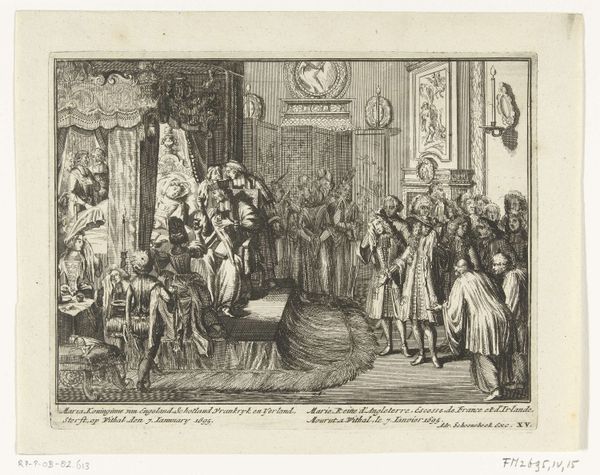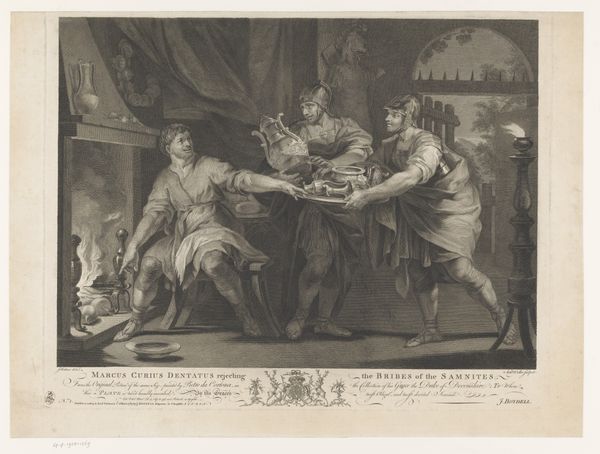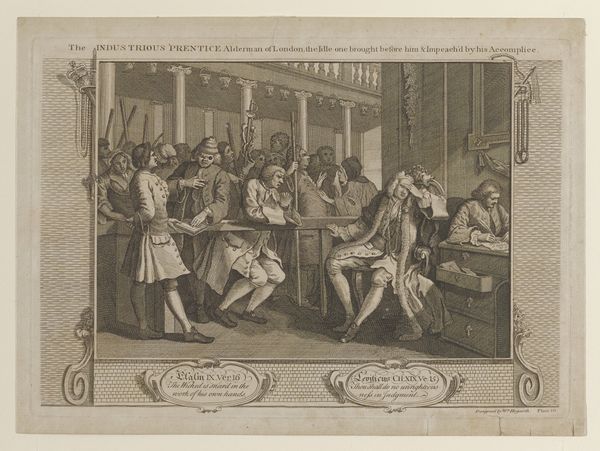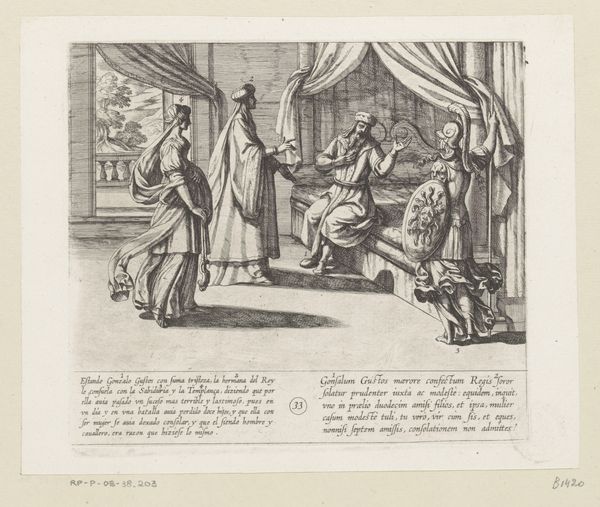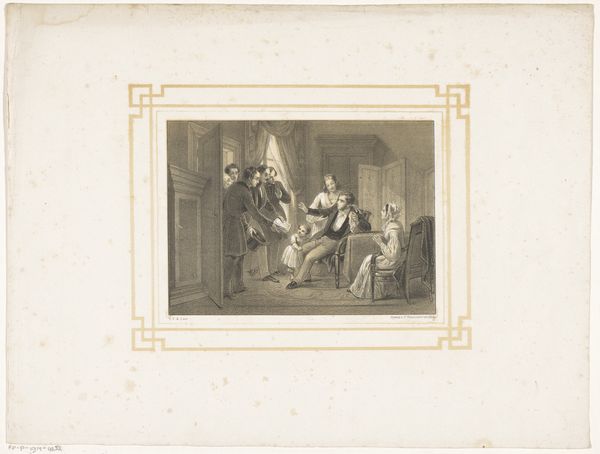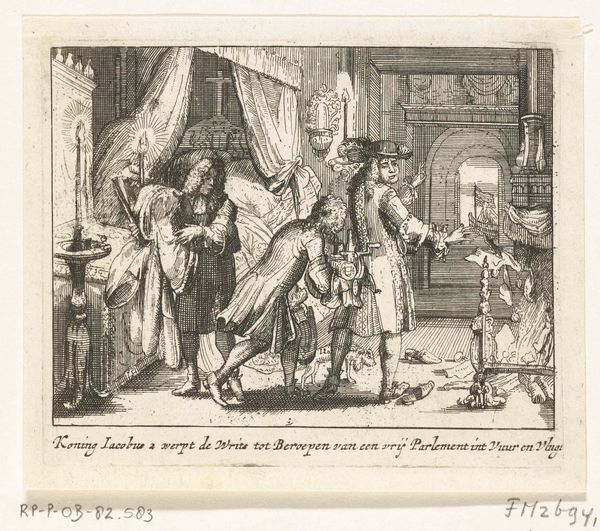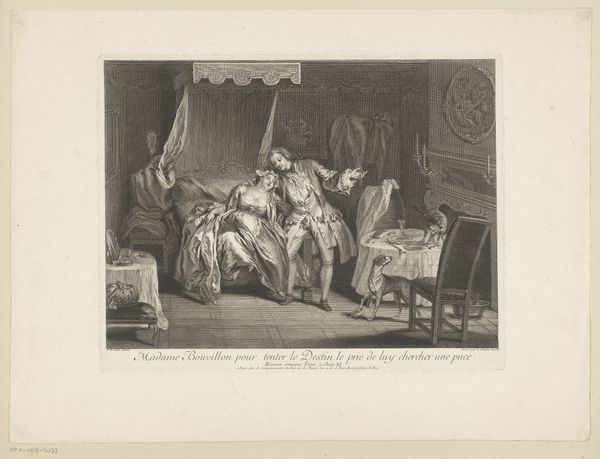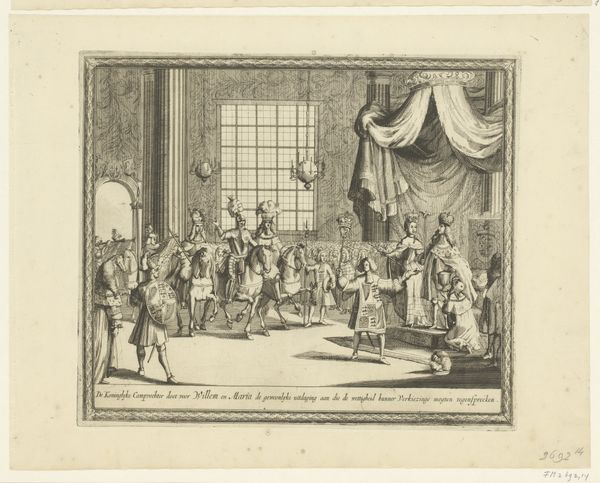
print, engraving
#
baroque
# print
#
figuration
#
history-painting
#
engraving
Dimensions: height 163 mm, width 217 mm
Copyright: Rijks Museum: Open Domain
Curator: This is a print by Jean-Baptiste de Poilly titled, "Manoach houdt een feestmaal voor Samsons vrienden," placing it sometime between 1679 and 1728. Editor: It has a stark, almost clinical quality to it. All the figures are neatly arranged, and that kneeling figure on the right definitely catches the eye. What's happening here? Curator: It depicts a scene from the Book of Judges. Manoah is holding a feast for Samson's friends before Samson marries a Philistine woman. It’s meant to show a significant moment of public affirmation. Editor: Marriage to someone outside his culture was fraught, wasn't it? Especially viewed through the lens of gender and cultural betrayal. Curator: Exactly. The artwork captures that historical moment when Samson publicly proposes a riddle to his soon-to-be wife's companions, one which has deeply rooted gender and social implications within a patriarchal culture. You have Samson seemingly asserting his power. The women are positioned within spaces that almost render them secondary. Editor: So the artist uses baroque figuration to showcase social power dynamics in the 17th or 18th century, emphasizing both historical narratives and the implicit power structures of the era. I wonder how audiences back then responded to these displays? Curator: The image definitely played a role in upholding existing power structures. It depicts a scene about to happen – a narrative used as leverage to reinforce gendered and cultural stereotypes and encourage social hierarchy. The act of visually framing and disseminating the story does more than represent. It becomes a part of this dynamic. Editor: Right. Thanks for giving me a deeper look into the politics behind it! Curator: Of course, viewing art as a form of rhetoric reveals that art can subtly perpetuate social narratives. It invites conversations to analyze how imagery engages within complex sociopolitical contexts.
Comments
No comments
Be the first to comment and join the conversation on the ultimate creative platform.



